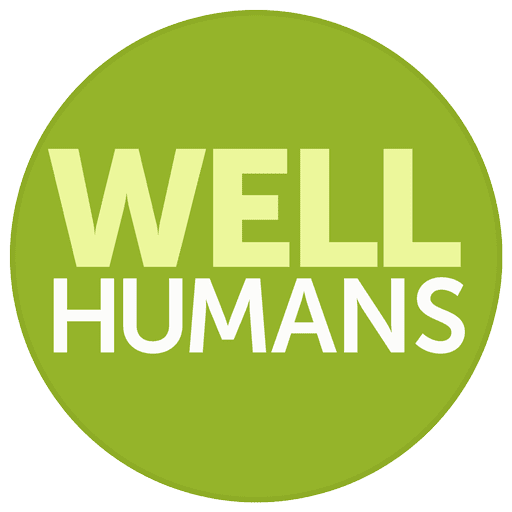
Learning about the human body can be intimidating because of its extraordinary complexity. But even though we don’t truly understand all of it, we do know a lot about how it works. And you don’t have to be a physician or a PhD in physiology to have a basic understanding of how your body works and what you can do to make it as healthy as possible.
This article is part of the Thorne “Body Basics” series – which is designed to make it less intimidating to learn about your body. By learning more about how the body works, you can make better decisions about your health – whether you’re at home, the store, your health-care practitioner’s office, or online. Because knowledge is power, let us help you be mighty.
The Digestive System
The digestive system, one of the body’s major organ systems, is referred to by other names – digestive tract, intestinal tract, gastrointestinal (GI) tract, GI system, alimentary canal, and gut.
The purpose of the digestive system is to extract and absorb nutrients and water from food to provide the raw materials necessary to sustain life. Superficially, the structure of the digestive system can be described as a long, muscular tube with specialized segments; these segments include the mouth, pharynx (throat), esophagus, stomach, small intestine, large intestine, rectum, and anus.
For the digestive system to accomplish its purpose, four processes must occur:
- Propulsion of food through the system
- Mechanical breakdown of food
- Chemical breakdown of food
- Absorption of nutrients and water
Propulsion – Swallowing, Peristalsis
The process of moving food through the digestive system begins when your tongue pushes food back into your throat (pharynx), triggering the swallowing reflex. Swallowing involves careful coordination of dozens of muscles and even requires that you stop breathing momentarily while the passage to the lungs (the trachea) is blocked by the epiglottis (ep-i-glot-is ), a flap that prevents food from entering the lungs and directs it into the esophagus. Each piece of food moving through your digestive system is called a bolus (boh-luh s).
As a bolus of food is swallowed, it passes the first of many sphincters (rings of muscle that close off tubes like a drawstring) at the top of the esophagus, which keeps it from going back into the throat.
Once in the esophagus, a process called peristalsis (per-uh-stawl-sis) begins. Much like the way an earthworm moves, peristalsis involves the coordinated contraction of muscles running around and along the tube to create a wavelike motion that pushes the food forward. Peristalsis moves food through every section of the digestive tract – from the esophagus to the anus.
Mechanical Digestion – Chewing, Churning, Segmentation
The name of the game when it comes to digestion is surface area. Just like kindling burns faster than a large log because more fuel surfaces interact with oxygen, breaking food into smaller pieces exposes more surfaces to chemical digestion.
Food only spends about 6-8 hours in your stomach and small intestine.1 That means your digestive system must be very efficient at extracting nutrients from food before it’s gone. Mechanical digestion is the critical process that makes chemical digestion feasible.
Mechanical digestion begins in the mouth with chewing. Chewing is the single greatest opportunity to expose food surfaces by mechanical means. After being chewed, swallowed, and passed through the esophagus, the meal collects in the stomach.
Most of the mechanical digestion occurs in the stomach. Compared to the esophagus and intestines, the stomach’s muscle layers are thicker and more powerful. Plus, the stomach has a third layer of muscle not found in the other digestive tubes that enables it to create a churning action in addition to peristaltic movements.
While the stomach is storing a meal (storage is another special feature of the stomach), the sphincters at the top and bottom close tightly and powerful stomach muscles smash and mix the food, like kneading dough in a bag. This breaks food apart further, while blending in digestive secretions from the stomach.
A small amount of mechanical digestion occurs in the small intestine where a bolus of food from the stomach is separated into even smaller boluses by specialized muscle movements called segmentation. Again, this process increases the surface area exposed to digestive processes by making larger pieces into smaller ones.
Chemical Digestion – Acids, Enzymes
No matter how well you chew or how much your stomach and small intestine squish and separate the chewed food into smaller pieces, the pieces are not small enough to release enough nutrients to sustain a human. Chemical digestion is critical to finishing the job. Although the foundation of chemical digestion is water, water acting alone is much too slow. Enter enzymes – specialized proteins that cause chemical reactions to occur faster.
The first enzymes to be mixed with food are amylase (a-muh-leyss) in saliva, which also adds water. Amylases break down carbohydrates, like starch, into sugars that are turned into quick energy.
Chewing mixes and coats the newly formed surfaces with saliva. In the stomach, proteases (proh-tee-eys-is) – enzymes that specialize in breaking down proteins – are added to the food. Specialized cells in the stomach also produce hydrochloric acid (HCl), which makes the stomach contents very acidic. HCl has three roles – activating proteases, breaking down proteins, and sterilizing the food to protect us from pathogens trying to hitch a ride.
The churning of the stomach thoroughly mixes the stomach secretions into the food – which includes more added water – to ensure the enzymes are acting on all available surfaces.
As food passes into the small intestine, the acid is quickly neutralized by sodium bicarbonate released from the pancreas into the small intestine. Enough sodium bicarbonate is added to deactivate the proteases from the stomach and activate a new batch of enzymes that function in the small intestine. These new enzymes – amylases, proteases, and lipases (lahy-peys-is; to help break down fats) – are also supplied to the small intestine by the pancreas. And all of this adds more water.
At the same time, the gall bladder releases bile salts – which it has been storing and concentrating as the liver produces them – into the small intestine. Bile salts emulsify fats (keep them mixed into water) to enhance their absorption. If you have had your gallbladder removed, then you will still have some bile salts helping to digest your meals, but only in the small quantities the liver can produce as the food passes through because there is no longer a place to store them.
For more information about digestive enzymes, check out our earlier article, What are Digestive Enzymes and Could I Benefit from Using Them?
As boluses of mixed and moistened food and enzymes continue moving through the small intestine, the nutrients in the food are ultimately broken all the way down into individual molecules. Now the nutrients are small enough to be used by the body.
Absorption
Most of the absorption of nutrients occurs in the later parts of the small intestine. Individual food molecules pass through the cell walls of the small intestine, enter the bloodstream, travel to the liver to be processed, and are sent along to the rest of the body for use. Very little is absorbed from the stomach. The large intestine absorbs some vitamins, but it is largely specialized to recover water and consolidate waste.
For more detailed information about absorption, check out our earlier article, Body Basics: Understanding How the Gut Acts as a Protective Barrier.
The Microbiome and Digestion
What is trash to one is treasure to another. The majority of the bacteria living in your gut are located in the large intestine. Although what’s left of the food that arrives there is largely stripped of the nutrients the body can release and use, there is still a lot of nutritional value that we can’t directly access.
A small part of the symbiotic value of the gut microbiome is that it can break down components in food, like dietary fiber, that our enzymes cannot. While these organisms are acquiring their nutrition from our waste, they are also producing molecules that are beneficial to us. For example, the large intestine absorbs vitamin B12 and vitamin K that are produced by gut bacteria, and the short-chain fatty acids produced by gut bacteria are used by the intestinal cells for nourishment.
Supporting Healthy Digestion
What can you do to keep your digestive system functioning efficiently?
- Chew thoroughly
- Drink plenty of water
- Eat a balanced diet that includes plenty of soluble and insoluble fiber
- Avoid over-eating
- Avoid use of antacids and acid-blockers
- Support healthy gut bacteria with prebiotics, including fermented foods like yogurt or sauerkraut, and supplements like Arabinex®, EnteroMend®, or Prebiotic +*
- Replenish and rebalance healthy gut bacteria with probiotics,* especially after using antibiotics
- Consider using digestive enzyme supplements if you have signs of poor digestive efficiency
Of course, no list of “how to stay healthy” tips would be complete without mentioning the importance of getting good sleep, regular exercise, and controlling stress, all of which contribute significantly to the proper functioning of the body’s systems, which in turn supports healthy digestion.





